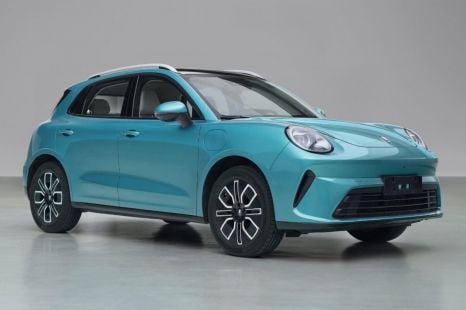

William Stopford
GWM is finally launching an electric SUV as Ora Cat breaks cover
15 Hours Ago
Mini has given the Countryman an adventurous makeover with the Untamed Edition. But at $73k, is this PHEV version more style than substance?
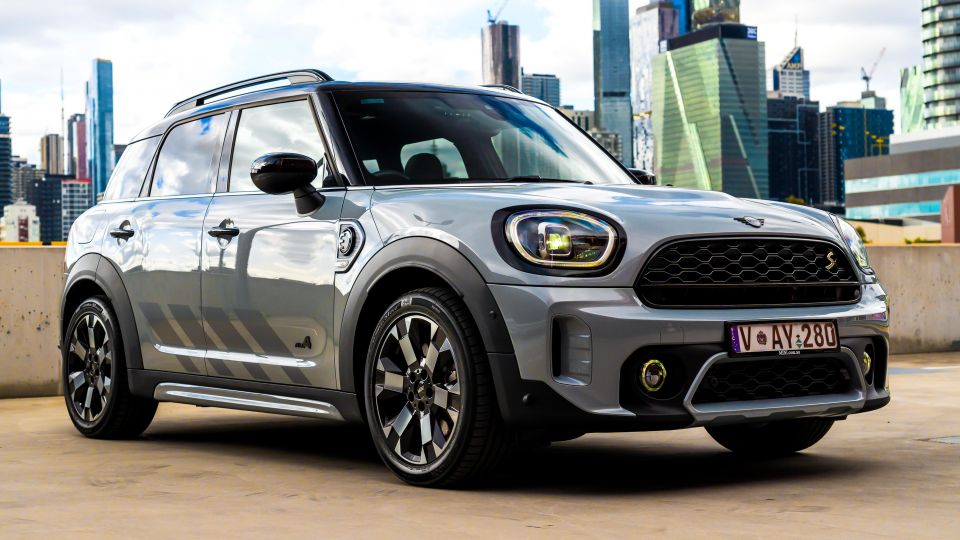


Quickly see how this car stacks up against its competition. Select any benchmark to see more details.
Where expert car reviews meet expert car buying – CarExpert gives you trusted advice, personalised service and real savings on your next new car.
The current Mini Countryman is now in its twilight years, with a new one to be revealed imminently.
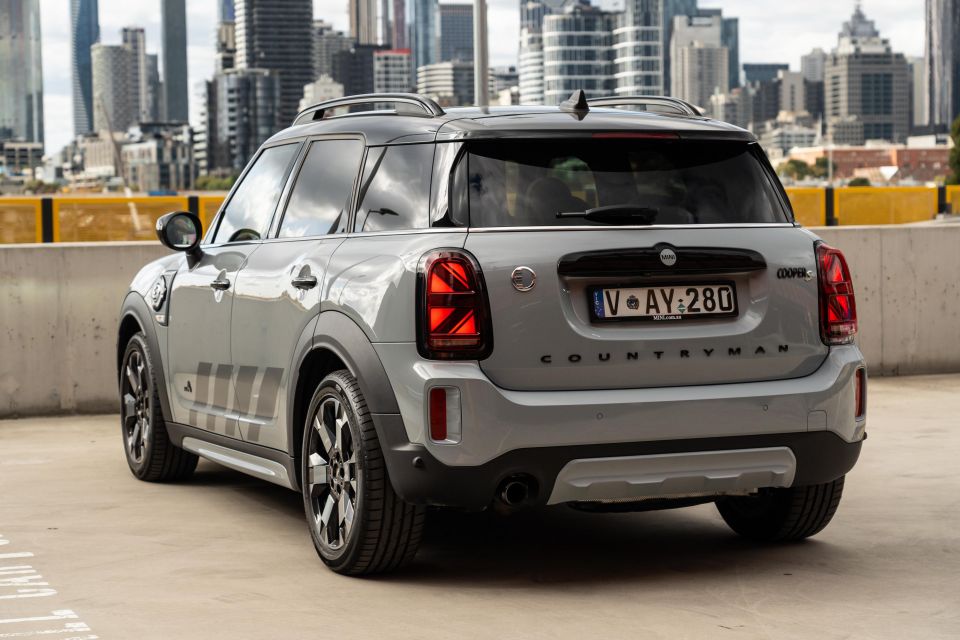
Does that render the current generation redundant? We’re not so sure.
The biggest Mini SUV is the brand’s most popular model in Australia in 2023, suggesting there’s still some life in this one yet. Last year it was outsold by the smaller Mini Hatch range, but the two lines are usually duelling for top spot.
As the current line-up nears the end of its life, Mini introduced a range of special editions across its various model lines, including this 2023 Mini Countryman Untamed Edition.
Like special-edition Minis past, there are unique design elements and feature inclusions that help the already distinctive Countryman stand out from the crowd, and it’s available in Cooper S and Cooper SE Hybrid variants.
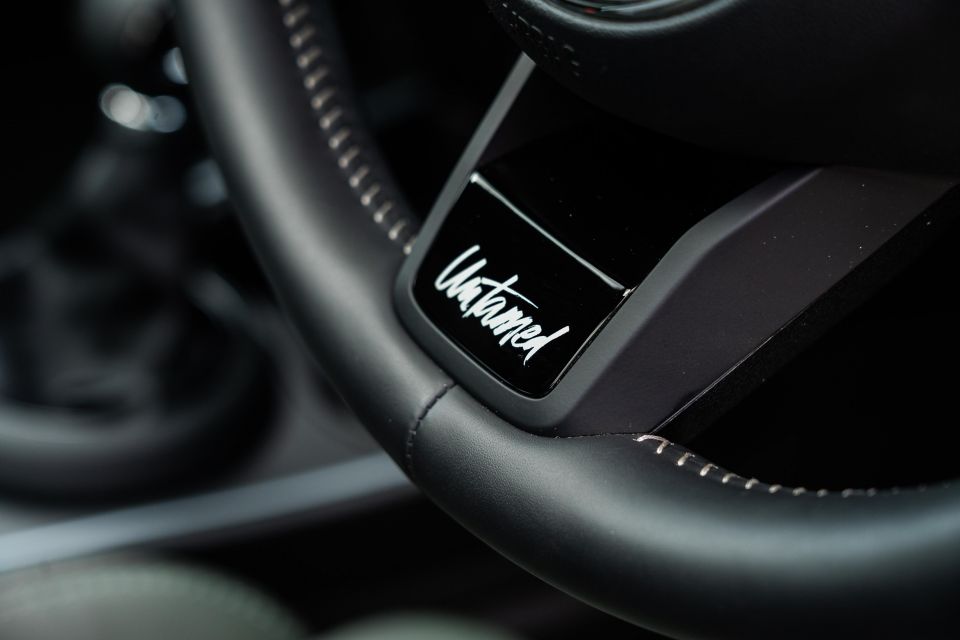
We have the latter on test here, the plug-in hybrid. At $70,000 plus on-road costs, is this funky adventure-themed Untamed Countryman worth the spend?
As noted earlier, the Mini Cooper SE Countryman Untamed is priced from $72,725 before on-roads – though you can get the petrol Cooper S version for $64,300.
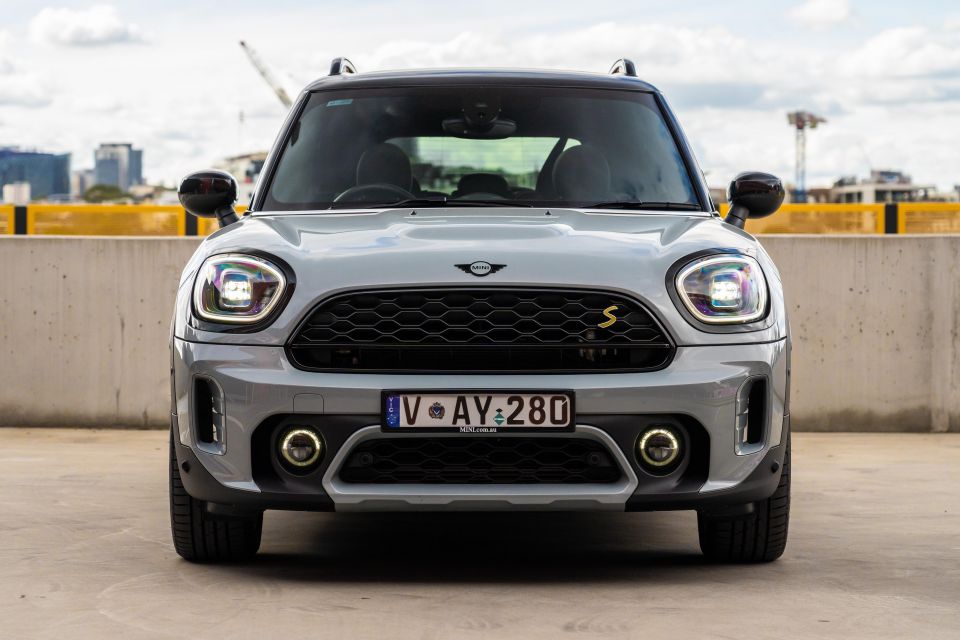
That’s a lot of money for a small SUV, particularly one that’s getting a bit old, even if it has a high-tech plug-in drivetrain. Even so, it’s only $400 dearer than the Mini Cooper SE Countryman Mini Yours – though prices are up by nearly $2000 since January 1.
Plug-in hybrid rivals are few and far between in the premium small SUV segment, despite either previously being available locally or being offered overseas.
In the same price ballpark, however, there are a few more options. The Cupra Formentor VZe ($62,990), Mitsubishi Outlander Plug-in Hybrid EV Exceed Tourer ($70,990), and Peugeot 3008 GT Sport Plug-in Hybrid ($82,915) all compete in this space, and are technically a size class larger than the Mini.
Closer to home, the electric BMW iX1 ($84,900) is based on a newer platform and is arriving soon, while the Volvo XC40 no longer offers a PHEV but can be had in Recharge Pure Electric form from $73,990. Mercedes-Benz sells the electric EQA from $81,700, and you can get into the larger Tesla Model Y from $69,300 – all prices exclude on-road costs.
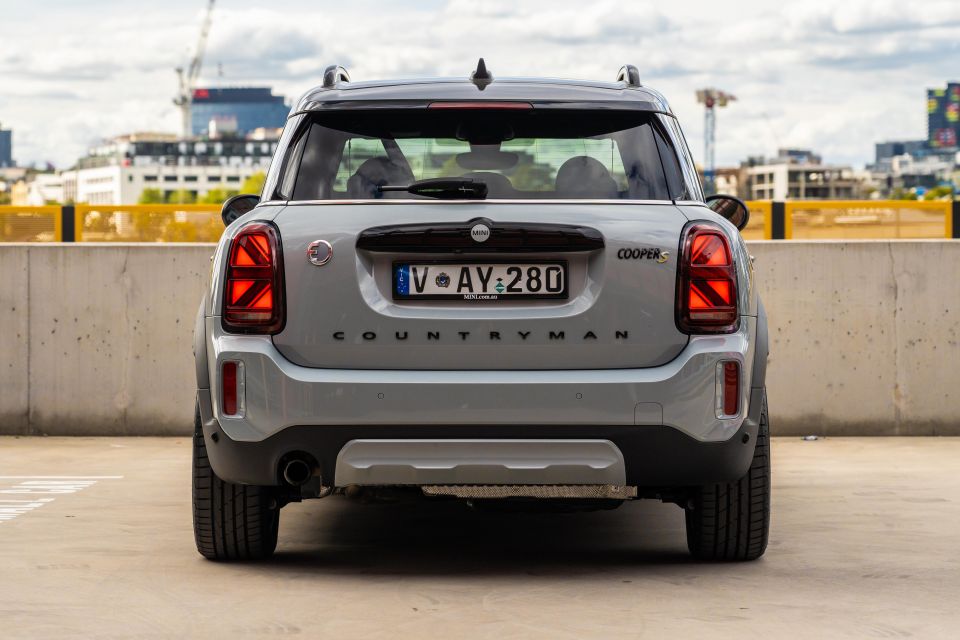
2023 Mini Countryman pricing:
Prices exclude on-road costs
Buy your new car without the stress. It's fast, simple and completely free.

Great service from Travis and team, second time I have used this business would not hesitate to recommend them to anyone
Craig C.
Purchased a Ford Ranger in Sunshine Coast, QLD
CarExpert helped Craig save $7,224 on his Ford Ranger, now let us save you on your next new car.
Get your BEST priceWhile getting on a bit, the Countryman’s cabin is still a strong suit – mostly.
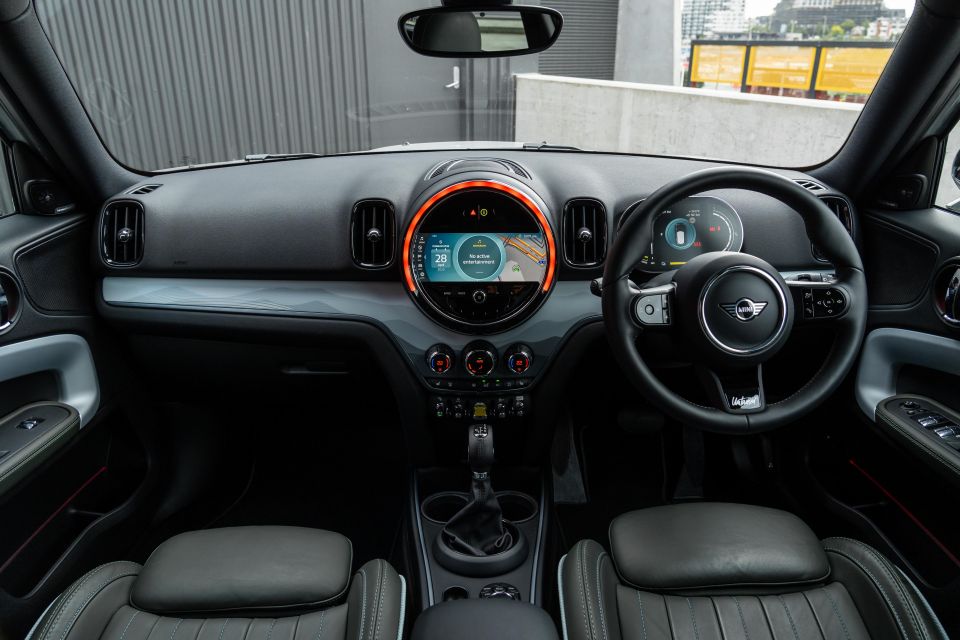
A lot of entry-level premium products can feel a little cheap and underdone in places, but the Countryman’s cabin feels upmarket and a cut above mainstream-branded competitors in terms of design, fit and finish.
The lovely Nappa leather steering wheel is a joy to hold, but the latest model’s fiddly button design isn’t quite as tactile as previous iterations.
Meanwhile, the mid- and upper-tier sections of the cabin are finished in soft-touch materials, and the Untamed Edition’s unique elements like mountain-esque trim graphics and Highland Green leather trim add a touch of bespoke-ness. It feels special.
Up front the driver and front passenger are treated to electric adjustment with memory presets, and there are manual seat base extender cushions which are great for lanky drivers like yours truly.

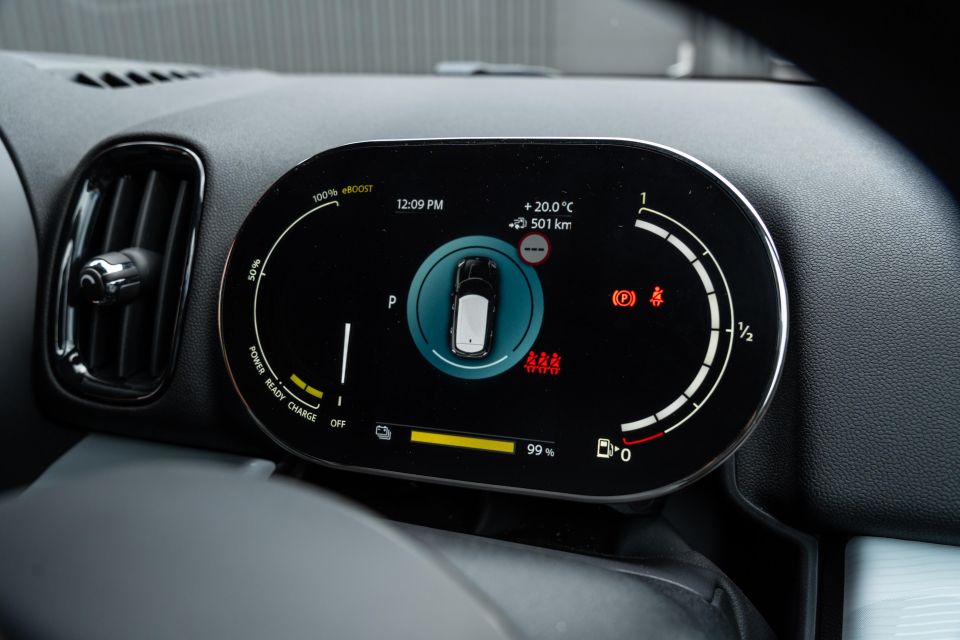
Comfort is good, with support and bolstering to keep you comfortable behind the wheel on long stints, and the range of adjustment for the seats and steering wheel means drivers of all shapes and sizes should be able to get comfy. Plus, the high roofline and big sunroof lend a spacious, airy ambience.
Ahead of the driver is a pretty average 5.5-inch instrument cluster.
Mini’s cluster is more or less a larger trip computer display flanked by analogue gauges masquerading as digital ones. It’s a unique take, but doesn’t really stack up against the digitised units we’re seeing in the segment.
We know already the next-generation Countryman will do away with a conventional instrument binnacle, with the driver’s cluster set to be relocated to the circular 9.4-inch OLED display, billed as the first “touch display with fully usable round surface” – find out more here.
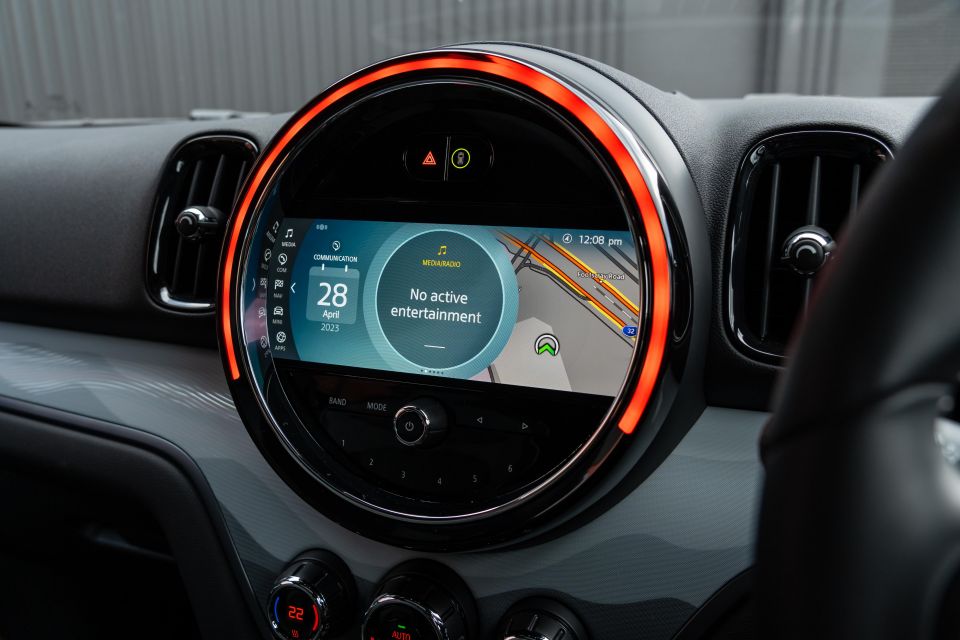
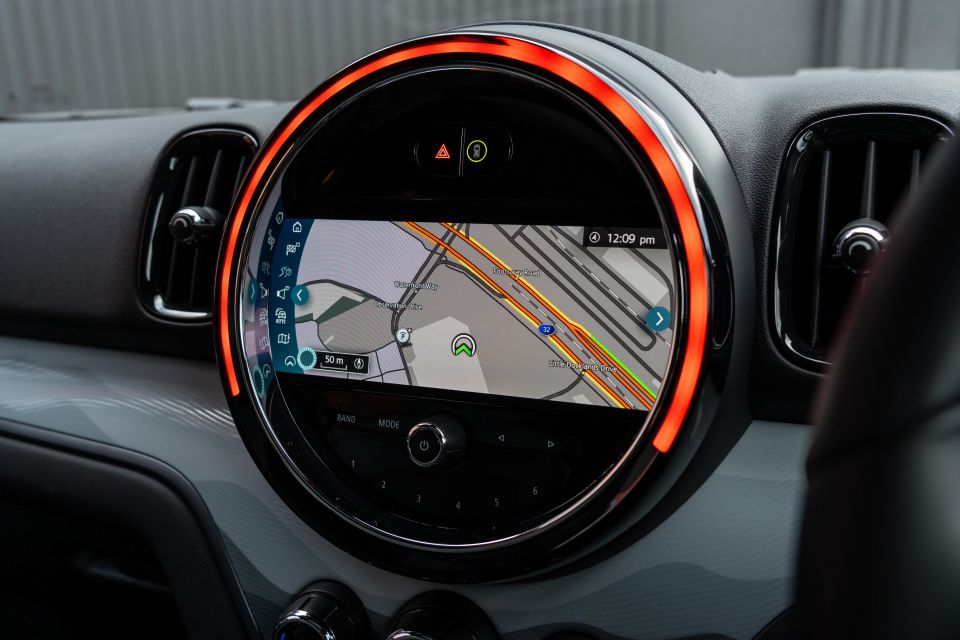
Until then, buyers of the current Countryman make do with an 8.8-inch touchscreen infotainment system running a reskinned version of BMW’s previous-generation software.
The touchscreen, which can also be operated by a rotary controller and buttons located on the centre console, is still a decent unit with wireless Apple Carplay as well as built-in navigation and connected services.
I had Apple CarPlay running during my week with the Countryman, which was reliable and responsive as the best in the business at least in terms of wireless connections.
The native interface somewhat masks its roots with a colourful skin and changes to the menu designs, but those across the latest BMW systems will note the array of improvements and developments that have come since.
It’s also worth noting Mini’s 8.8-inch display is well down on the real estate offered by competitors, with most offering 10.25-inch displays at a minimum.
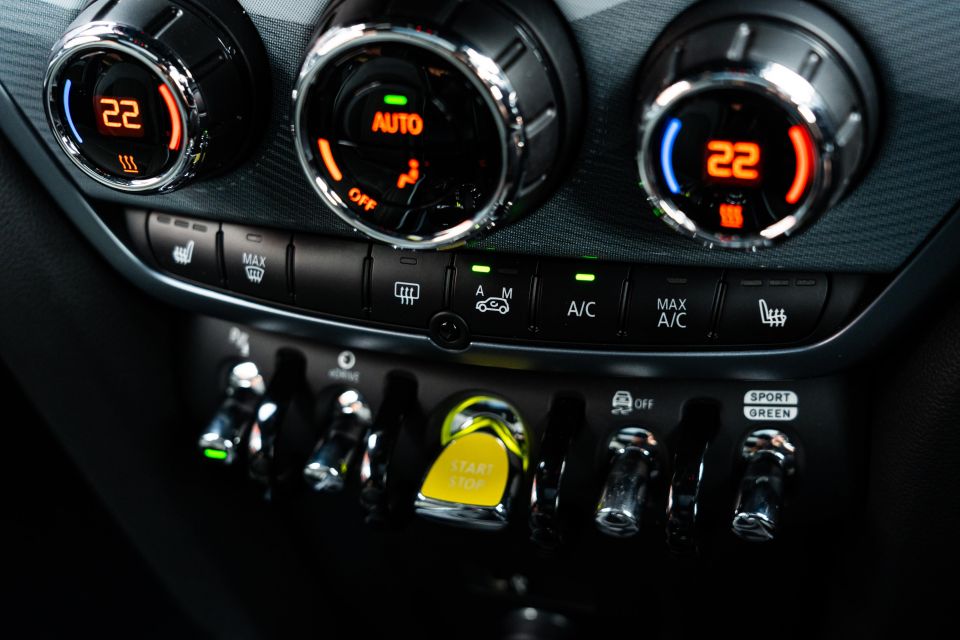
At least quality from the 12-speaker and 410W Harman Kardon premium audio system is good, with crispness and depth to its sound. It also helps to down out the echo of road noise – more on cabin refinement on the road a little further down.
Another nice element is the use of chunky physical buttons and switches for functions like the climate controls and drive modes, instead of the fiddly touch-capacitive stuff spreading through the industry.
I particularly like the retro-inspired toggles for the drive modes and starter switch, latter of which in the Cooper SE Countryman is bright yellow to signify its electrified drivetrain. Some might find it contrived, but I like the fact Mini has committed to being different.
The chunky, rubberised rotary controls for the HVAC are satisfying to use, with small readouts for the set temperature, as well as a larger centre dial which controls fan speed and houses the ‘AUTO’ button. No diving through touchscreen menus here.
Storage is fine but a little quirky, with the hard plastic cupholders being a very specific size, and the door pockets able to hold small to medium-sized bottles. The cubby under the central armrest is big enough for phones and wallets, but the wireless phone charger housed within it can’t accommodate plus-sized smartphones.
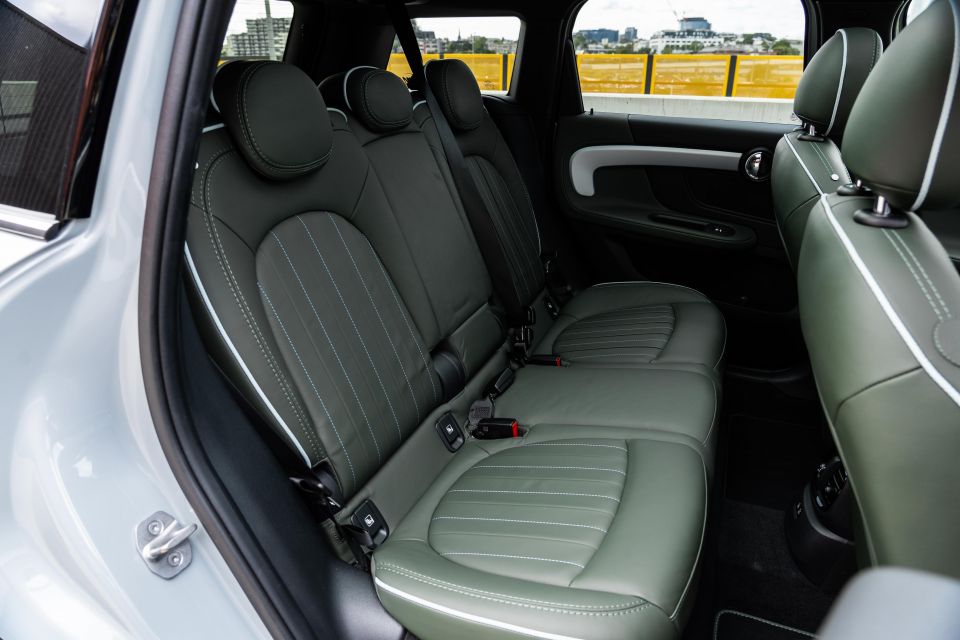
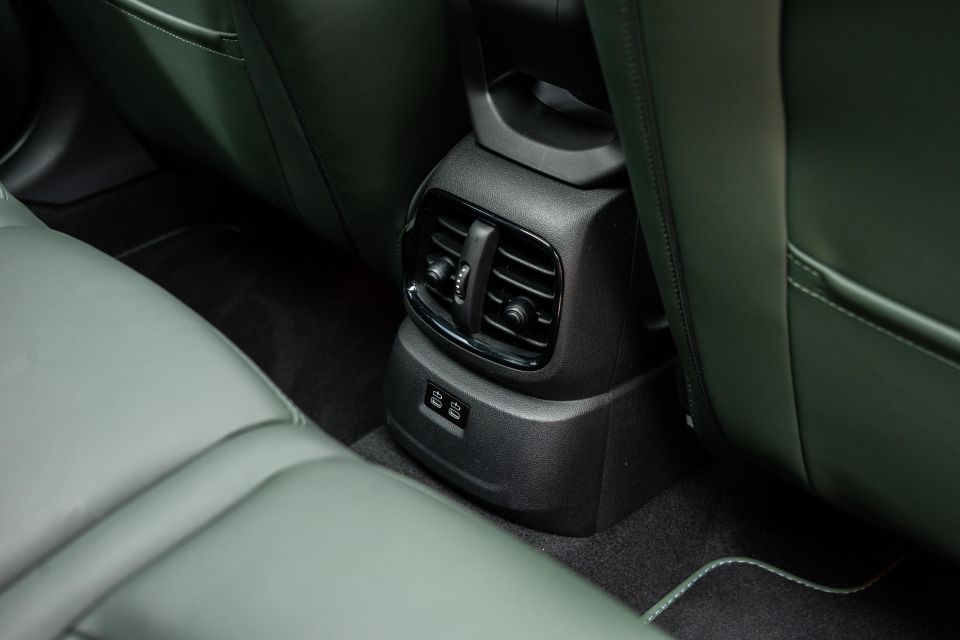
While a number of competitors have seen generational overhauls since the current Countryman’s launch, the Mini’s second row remains one of the best in segment – funny that, given the brand’s name and heritage.
For two adults, headroom and legroom in the rear is very good by class standards, and the flat-ish centre pew means you can put three across at a pinch if you need to. The deep and wide footwells mean rear occupants shouldn’t be stepping on each other’s toes either, and the driveline hump is fairly minimal.
Rear air vents and USB-C charging ports feature, though no separate zone of climate control, as do map pockets, bottle holders in the doors and a fold-down centre armrest with cupholders.
Kiddies are catered for with ISOFIX anchors on the outboard seat positions, and top tethers across all three. The rear bench also slides and reclines with three individual seat backs, which is handy.
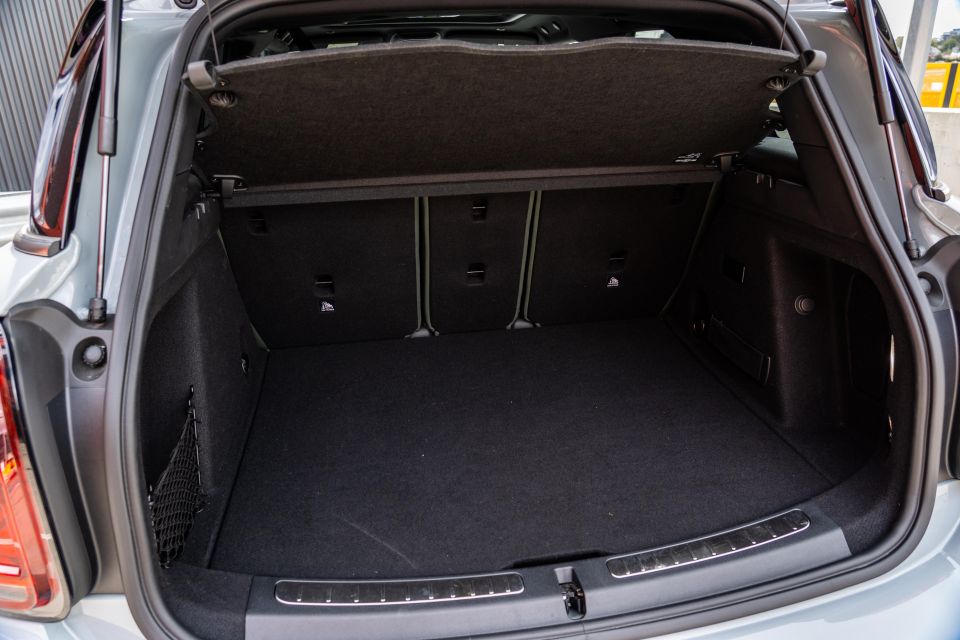
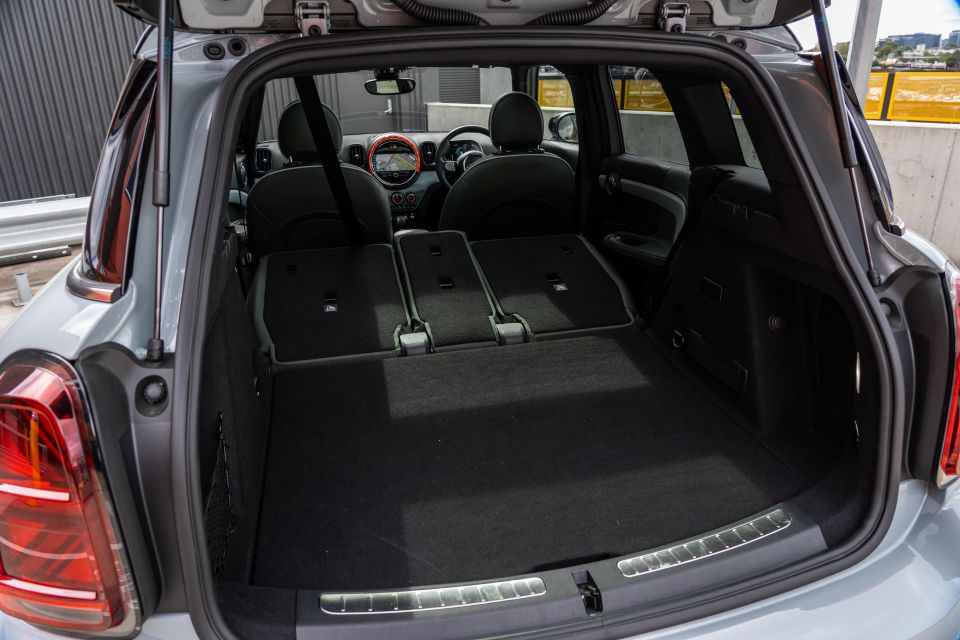
The Countryman Hybrid quotes a little less luggage capacity than petrol and diesel models due to the placement of the battery pack under the boot floor. Mini quotes 405 litres in the Cooper SE, down 45L on the rest of the range.
For reference, the new BMW X1 holds 540 litres with the rear seats in place, while the Volvo XC40 (including Recharge Pure Electric versions) quotes 460 litres.
Compared to rival plug-in hybrids, the Countryman PHEV does better the Cupra Formentor VZe (345L), however cannot match the Peugeot 3008 PHEV (529L).
Power comes from a 1.5-litre turbocharged plug-in hybrid system, incorporating a 9.6kWh lithium battery pack and 65kW/165Nm electric motor.
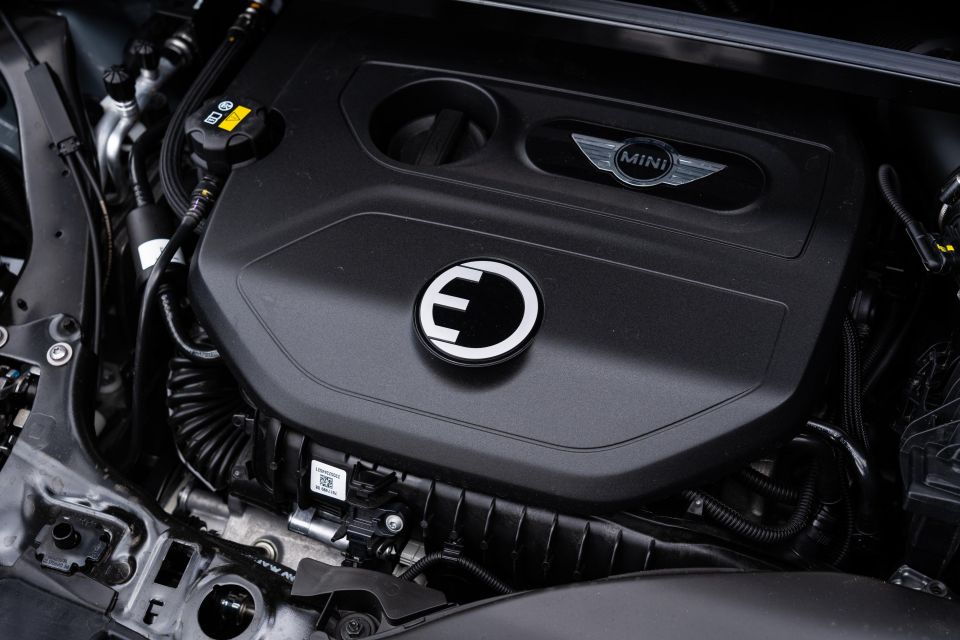
The petrol engine is shared with the base Cooper grade, developing 100kW and 220Nm on its own. It drives the front wheels while the e-motor drives the rear for all-wheel drive (All4 in Mini-speak).
Combined, the two power sources make for outputs of 165kW and 385Nm, and a six-speed automatic transmission is mated with the petrol motor driving the front axle.
Mini quotes an all-electric driving range of 55-61 kilometres, while combined fuel consumption is rated at 2.4L per 100km with a fully-charged battery. CO2 emissions are 54g/km.
The Countryman Hybrid is the quickest-accelerating variant if you exclude the John Cooper Works (JCW) performance hero, claiming a 0-100 dash in a brisk 6.8 seconds on its way to a top speed of 195km/h.
As with most plug-in hybrids, starting up the Mini Cooper SE Countryman is met with silence.
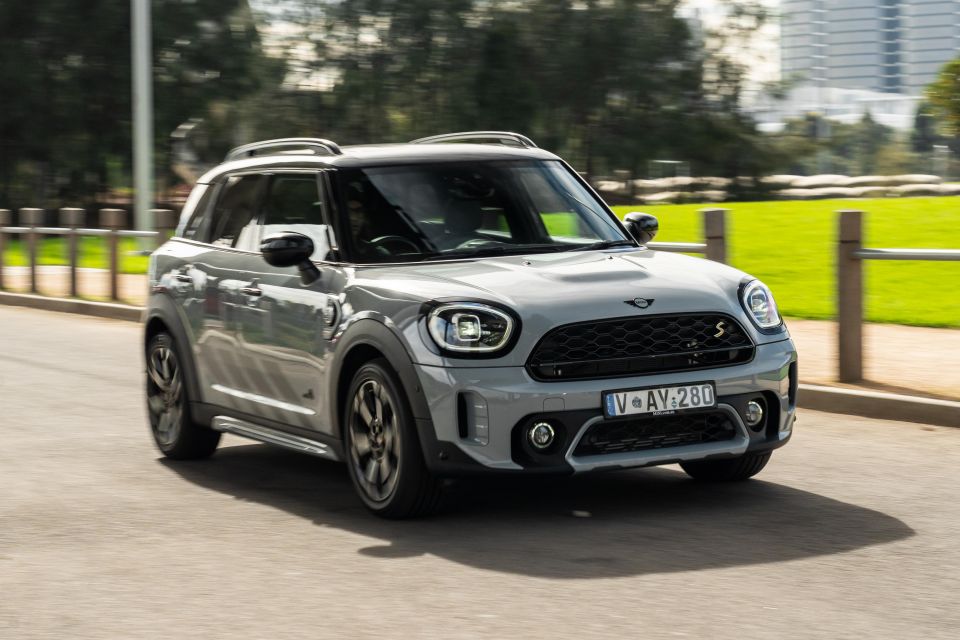
It defaults to EV mode when there’s enough battery charge, and I found a real-world range of 50-55km to be accurate in mixed conditions – not bad for a vehicle with what is a relatively small battery.
With 65kW and 165Nm, the Countryman doesn’t feel anywhere near Tesla fast in EV mode but it’s well-suited to city commuting, with electric torque available from when you hit the throttle pedal, while the silent progress again lends to that upmarket vibe in the cabin.
Power delivery is smooth and linear, and the funky power meter lights up with yellow segments to show how much more the electric motor has to give before you have to turn over the petrol engine.
While the silent, emissions-free aspect of Countryman Hybrid motoring is unique, the rest of the experience is familiar if you’ve ever driven a recent Mini. It’s responsive, errs on the side of sporty in terms of the chassis tune, and is a fun little thing to steer – particularly threading through tight city streets.
Despite the taut chassis tuning, the ride is pretty good on the Untamed Edition’s 18-inch machined alloys and 225/50 Hankook Ventus S1 evo2 tyres, whether you’re in town or on the highway.
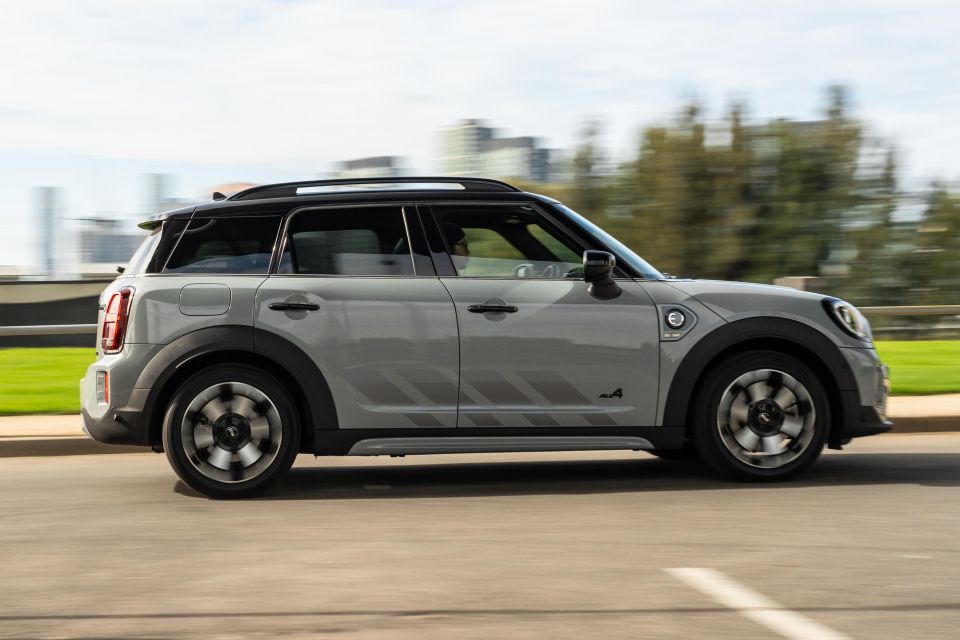
Where expert car reviews meet expert car buying – CarExpert gives you trusted advice, personalised service and real savings on your next new car.
On the open road the Countryman Hybrid can actually drive at speeds up to 130km/h in EV mode, not that you’ll be travelling at that speed often in Australia. At a cruise it’s nicely stable and sure-footed, though there’s a bit of road roar that permeates the cabin particularly over coarse-chip black top.
I took the Countryman on a road trip down to Anglesea with friends, and found it to be a capable tourer – save for the cabin noise levels over coarse-chip country freeways. The Countryman isn’t alone in the segment for lacking a little in open-road refinement.
If you hit the kickdown point in the pedal travel or deplete the battery, the three-cylinder petrol engine kicks in to give you the maximum 165kW/385Nm outputs as well as activating the front axle drive.
The signature engine note is characterful but far from coarse, and with both power sources helping the Countryman Hybrid offers performance to match its still keen dynamics – despite the 235kg penalty over the equivalent Cooper S Countryman. It’s also helped by all-paw traction which inspires confidence on wet roads, amongst other less than favourable conditions.
My complaint about the performance is if you gun it when not in Sport mode, the Countryman Hybrid can take a moment to recognise what’s being asked and kick down a couple of cogs to bring you maximum performance. Otherwise, it’s a well-balanced experience.
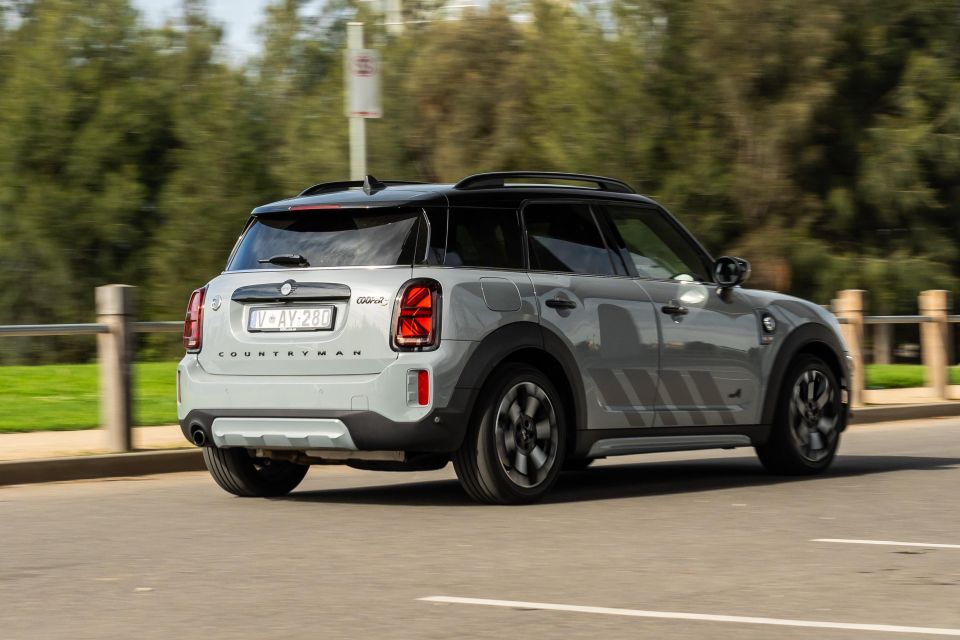
In Hybrid mode with a depleted battery, you’ll typically see fuel consumption hover around the 5.0L/100km mark especially if you spend more time on the freeway. Around town you’ll see closer to 4.0L/100km, with the Mini acting more like a conventional Toyota-style hybrid in these environments.
Another area for improvement is driver assistance features, as the Countryman still lacks features which are an expectation for the segment and price bracket.
Mini’s camera-based AEB and adaptive cruise systems are basic compared to what’s on the market today, and can be affected by adverse weather or poor light. There’s no lane-keeping function, rather just lane departure warning, so the Countryman doesn’t offer a proper semi-autonomous highway assistant like its rivals.
I found the adaptive cruise control had an annoying habit of randomly shadow braking, which isn’t ideal if you’re in the fast lane with cars trailing behind you.
Perhaps the most glaring omission is the lack of blind-spot monitoring and rear cross-traffic alert. Mini has previously promised these features as rolling changes, but thus far hasn’t delivered – we expect this to be addressed with the new generation. Thankfully, the tall glasshouse makes for excellent outward visibility.
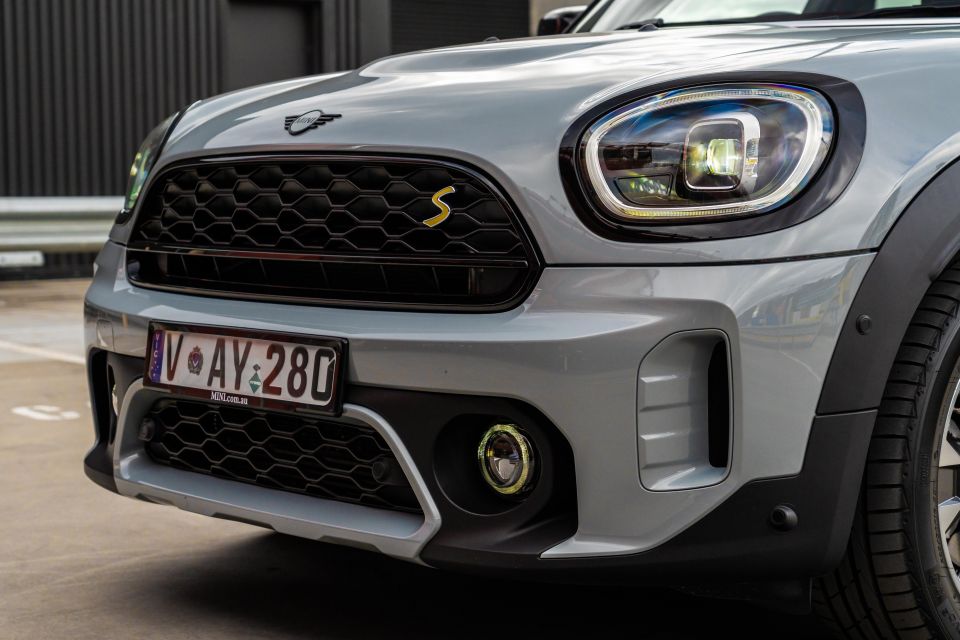

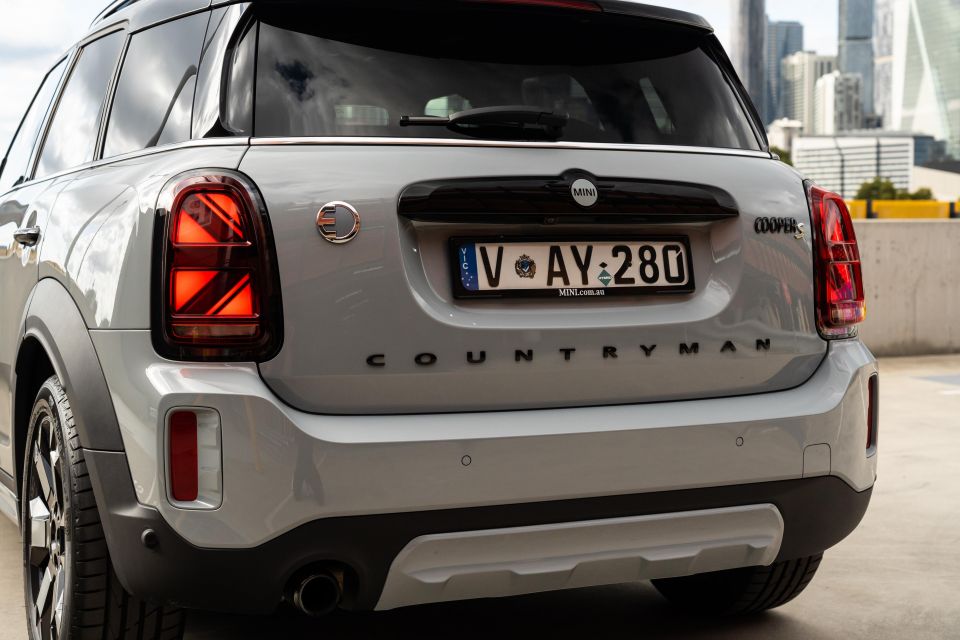

Countryman Untamed highlights:
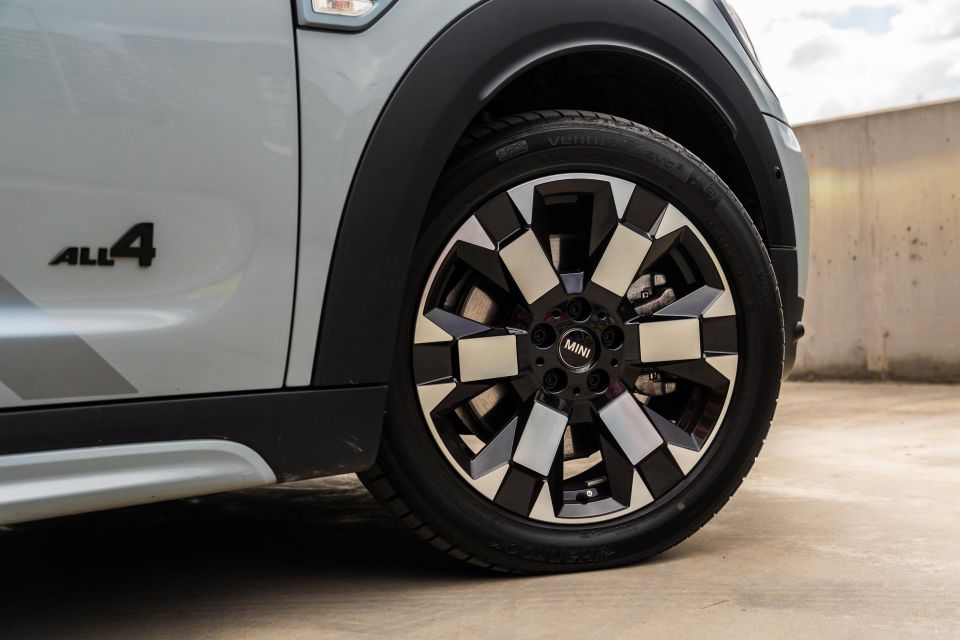
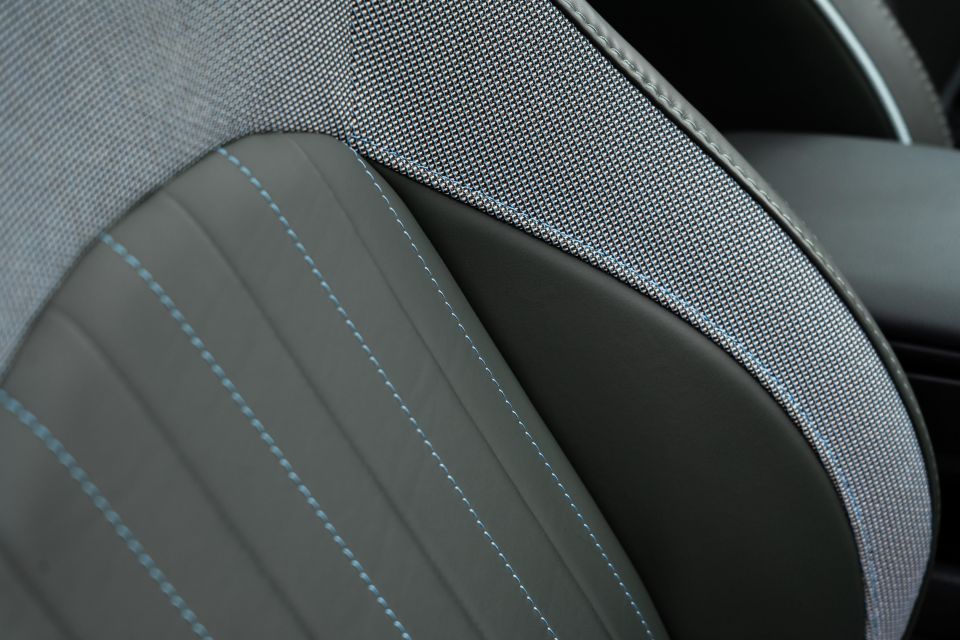
That’s on top of the Countryman Mini Yours specification:
Exterior
Interior
The Countryman has a five-star ANCAP safety rating based on 2017 Euro NCAP tests.
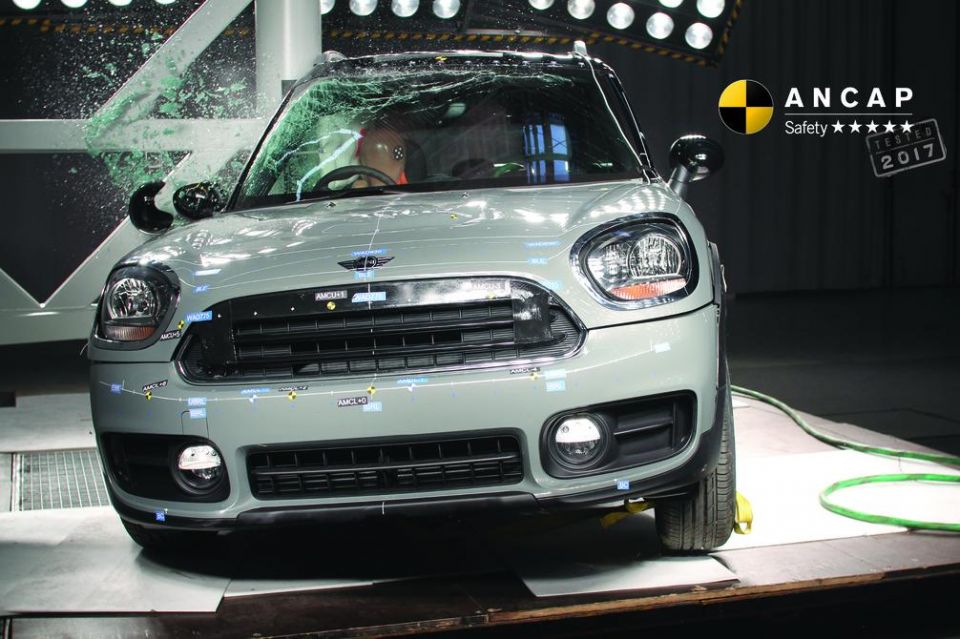
It received an adult occupant protection score of 90 per cent, a child occupant protection score of 80 per cent, a vulnerable road user protection score of 64 per cent and a safety assist score of 51 per cent.
Standard safety features include:
Notable omissions include blind-spot monitoring and rear cross-traffic alert, as well as a lane-keep assistant or lane centring functionality. The new-generation model is expected to address these specification blanks.
The Mini range is backed by a five-year, unlimited-kilometre warranty in Australia.
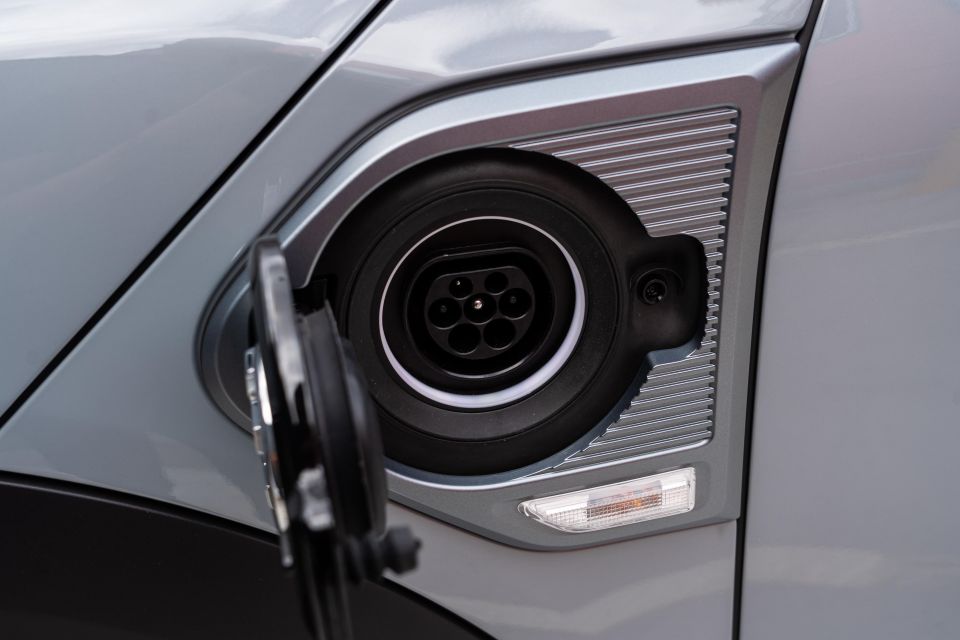
Maintenance in the Countryman is required every 12 months or 20,000 kilometres, and Mini offers two servicing plans.
The first costs $1495 and covers oil, fluid, filter and spark plug changes, the Plus package is priced at $4031 and covers consumables like brake pads, brake discs, wiper blades, as well as clutch discs and plates – not that all of these are applicable to the Countryman Hybrid.
If you travel longer distances which will see you travel past the 50-60 kilometres of EV range, you can expect fuel consumption around the 4.0L per 100km mark in town and 5.0L/100km with more freeway use.
I saw an indicated 5.6L/100km over some 550km of testing, which included a few hundred road trip kilometres with only the first 50 or so kilometres driven on pure EV mode. Not bad.
While we weren’t able to do a proper charging test, the 9.6kWh usable capacity means it should take just over 4 hours to replenish a full battery using a conventional 2.3kW three-pin outlet. It’s worth noting the Mini typically holds around 5-6 per cent charge when EV range reaches zero.
Buy your new car without the stress. It's fast, simple and completely free.

Great service from Travis and team, second time I have used this business would not hesitate to recommend them to anyone
Craig C.
Purchased a Ford Ranger in Sunshine Coast, QLD
CarExpert helped Craig save $7,224 on his Ford Ranger, now let us save you on your next new car.
Get your BEST priceThe Countryman PHEV has a lot of strong points, but it’s arguably too old and expensive in 2023.
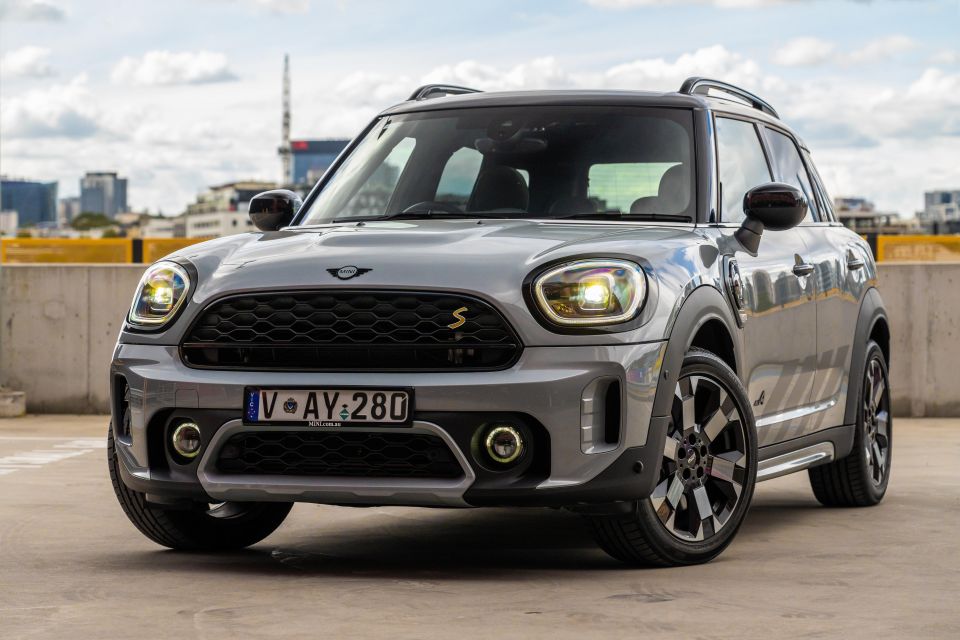
When the plug-in version was released years ago it was at the forefront of electrification in the segment and had few rivals. Fast forward to today and it’s been overtaken by rivals with more sophisticated tech and electric drivetrains.
At nearly $73,000 as tested, the Countryman is similarly priced to the Tesla Model Y and Volvo XC40 Recharge, which offer electric drivetrains with similar performance. Both are more spacious and modern in terms of their tech.
Still, I have a soft spot for the Mini, which offers a cute retro-inspired design with a more practical body than its hatchback stablemates, while blending electrified motoring with the brand’s fun-to-drive characteristics. Its achievable EV driving range also holds up should you do less than 50km per day and can charge nightly.
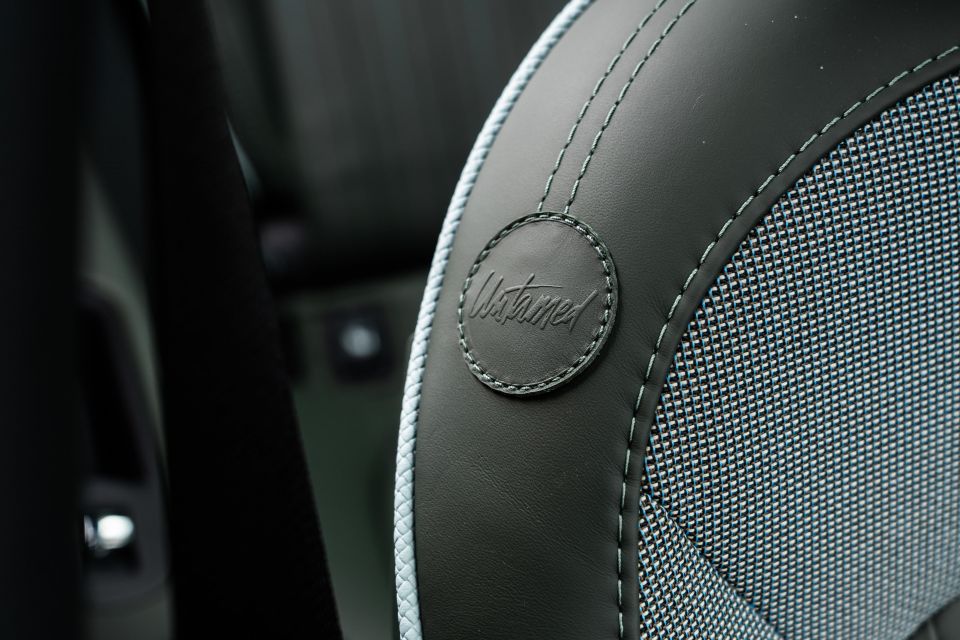
Further, the Untamed package brings bespoke design and trim elements that really make this thing feel special, from the green leather to the rally car-inspired exterior graphics; it helps to keep the Countryman fresh after all these years.
We still reckon you’re better off not spending such huge money on a car that’s about to be replaced, especially when similarly-priced electrified offerings can give you more for similar coin. If the Untamed trimmings really excite you, save $8000 and get the Cooper S.
The next-gen Countryman should address our grievances with the current model, and instead of a PHEV the Countryman will offer two all-electric versions running the same drivetrains as the BMW iX1. Should these come in for around the same spend as the current Cooper SE, Mini could be onto something.
Click the images for the full gallery
Where expert car reviews meet expert car buying – CarExpert gives you trusted advice, personalised service and real savings on your next new car.
James Wong is an automotive journalist and former PR consultant, recognised among Australia’s most prolific motoring writers.


William Stopford
15 Hours Ago
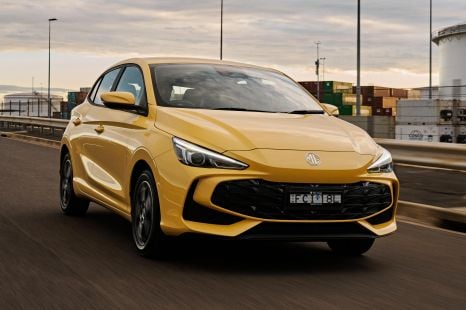

William Stopford
2 Days Ago
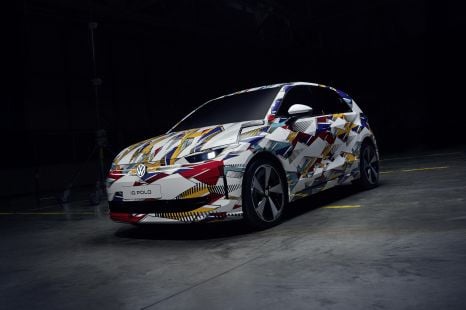

James Wong
9 Days Ago
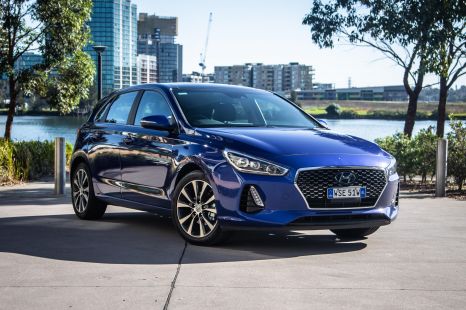

William Stopford
11 Days Ago
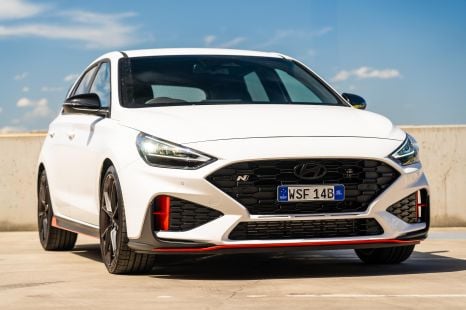

William Stopford
12 Days Ago
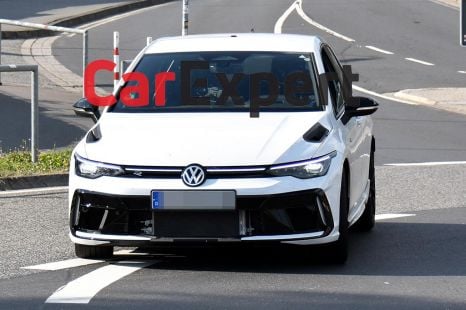

Damion Smy
16 Days Ago